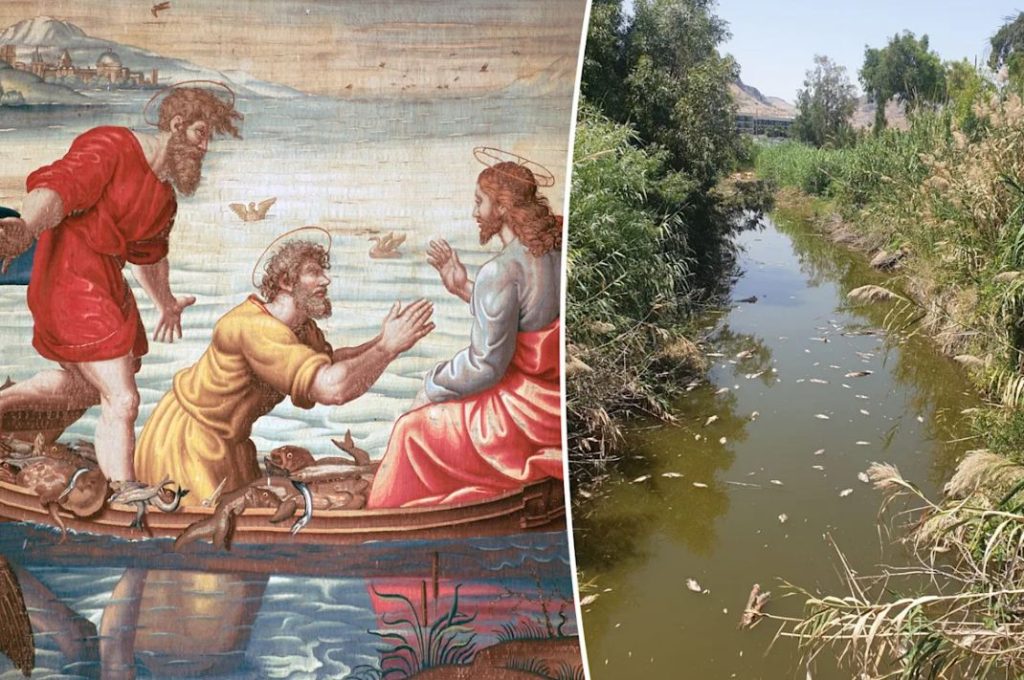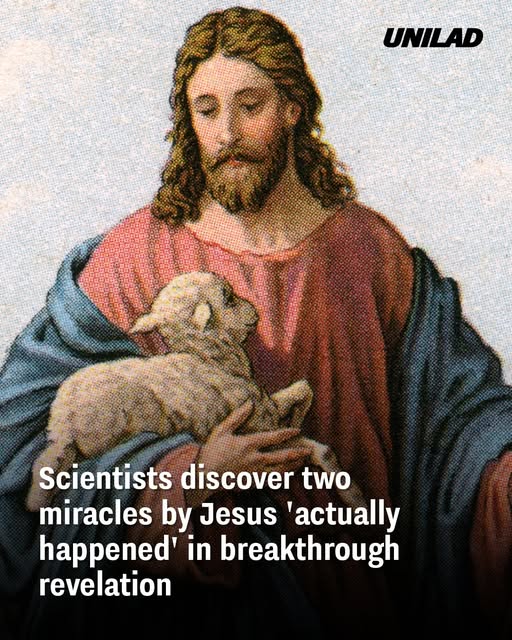A recent scientific breakthrough has offered a fascinating explanation for two of Jesus’ most famous miracles, suggesting they may actually have happened grounded not in the supernatural, but in natural phenomena. These include the Feeding of the 5,000 (the loaves and fishes) and the Miraculous Catch of Fish on the Sea of Galilee.
The Miraculous Catch: Fish Rising from the Depths
According to an article in Water Resources Research, researchers propose that under certain conditions, the Sea of Galilee, a stratified lake (warm, oxygen-rich surface layer with cold, oxygen-poor deep water), can experience a phenomenon called an upwelling triggered by strong winds. Physical limnologist Yael Amitai from the Kinneret Laboratory describes that when strong westerly winds push the surface water east, it displaces deeper, low-oxygen water upward. This upwelling causes oxygen-starved fish to rise and float to the surface—creating a sudden, bountiful catch for fishermen. Climate researcher Ehud Strobach of the Volcani Institute added that simulations using 3D lake and atmospheric models reflect these conditions. They modelled sudden fish-kill events tied to internal waves and oxygen-depleted water rising to the surface—mirroring accounts of unexpectedly large hauls of fish in the same location.

Timing Is Everything: When Nature Aligns with Narrative
The researchers suggest that the phenomenon is most likely to occur in late spring to early summer, when rapid temperature changes create ideal conditions for internal waves and water-layer disturbances—potentially lining up with the biblical timing of the catch.
Feeding the Multitudes: A Natural Explanation Emerges
While the biblical narrative of Jesus turning two loaves and two fish into food for thousands has traditionally been seen as a miracle, this new theory suggests the story could have originated from the same dramatic phenomenon—where a simple fish haul overwhelmed the early Christian followers, inspiring the tale. The catch, possibly misconstrued or retold as divine intervention, may actually stem from a rare but scientifically explainable event.
Scientific Transparency Meets Ancient Faith
Though evidence from 2,000 years ago is sparse, the study’s real value lies in offering a plausible mechanism—one evidenced by recurring fish kills at the same location today. This blend of scientific observation and theological narrative provides a compelling lens through which to view these ancient accounts—not necessarily debunking them, but grounding them in natural laws.

Looking Ahead: Science Illuminates, Faith Inspires
This research doesn’t diminish the spiritual significance many attach to these stories. Instead, it opens a dialogue between science and faith—illuminating how real-world occurrences may have shaped or contributed to the telling of miraculous events. As climate modeling and hydrological research advance, our understanding of how legendary narratives might intersect with environmental phenomena deepens. In the end, be it by faith or by physics, the miracles remain captivating—now with an added layer of scientific intrigue that enriches, rather than erases, their mystique. This study highlights how ancient events can be revisited through modern science, offering new perspectives without erasing their spiritual essence. By blending faith and evidence, researchers show that natural phenomena may have inspired extraordinary stories—bridging history, belief, and discovery in a way that deepens both understanding and wonder.

















